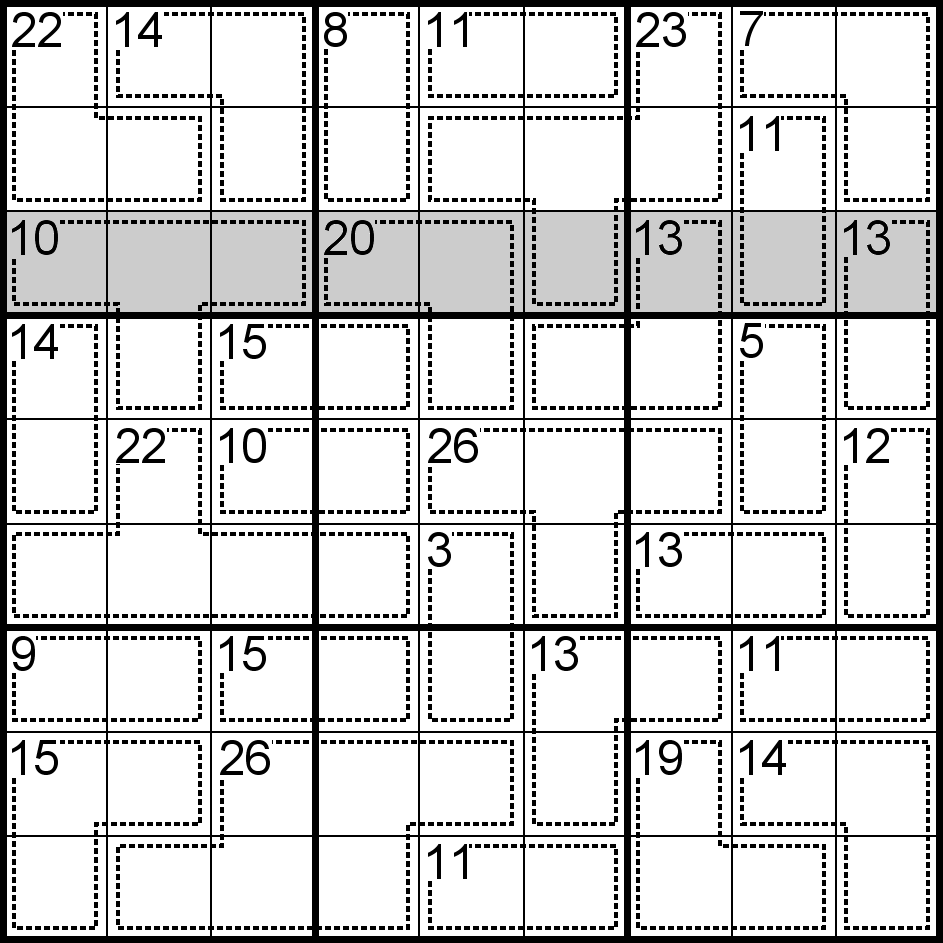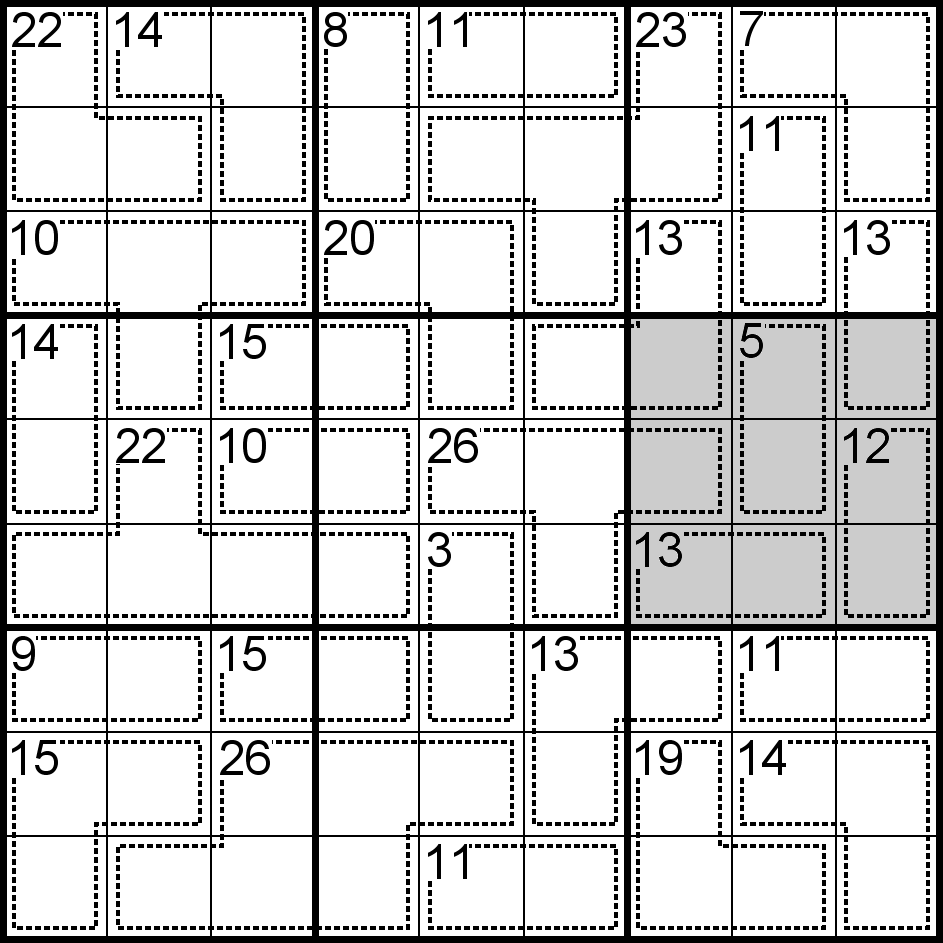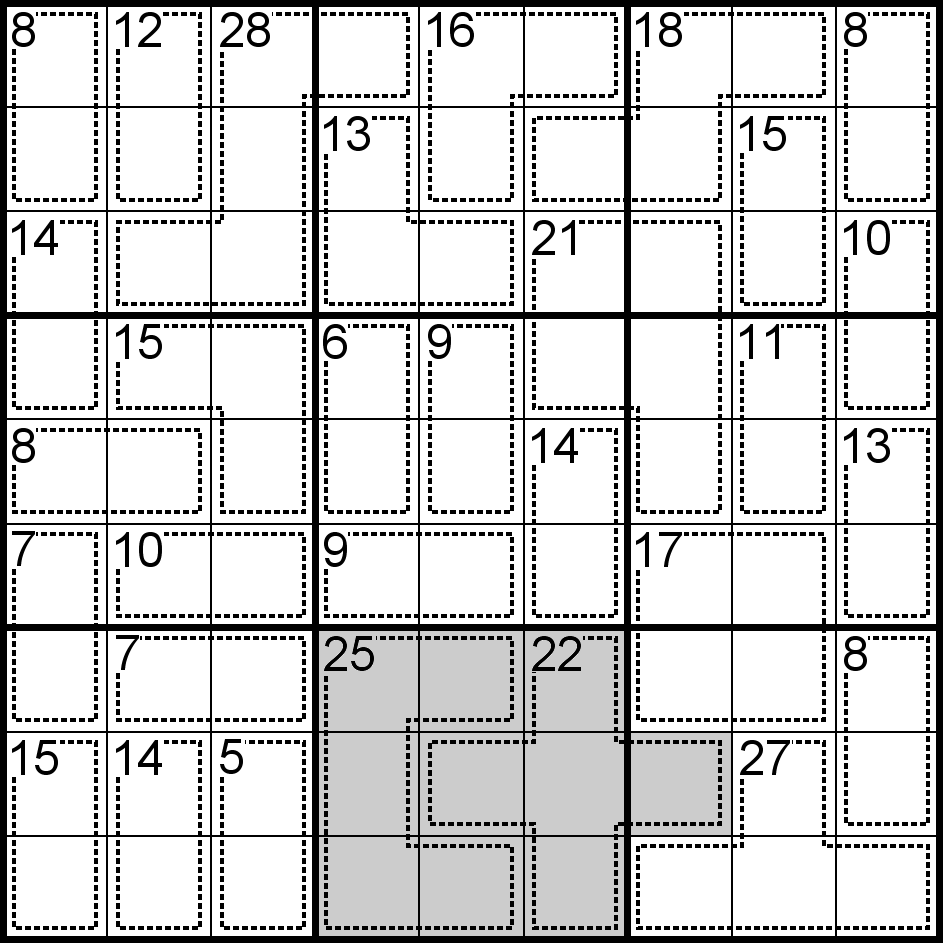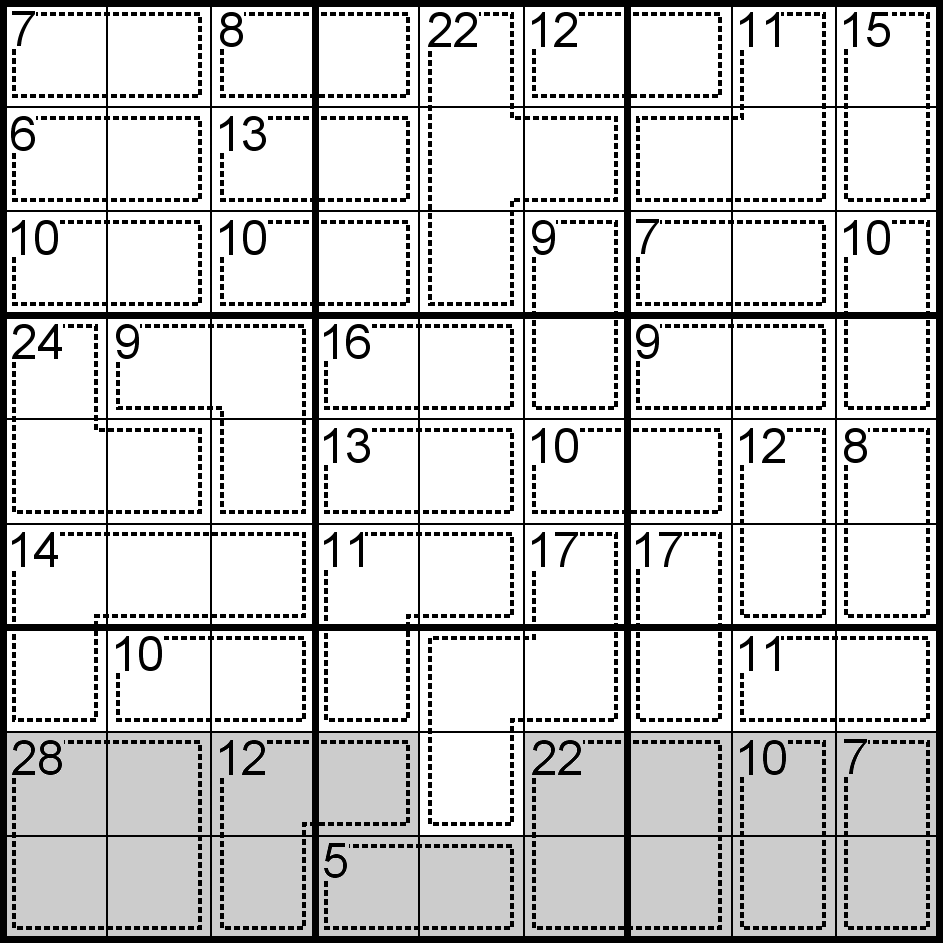Killer Sudoku: Rules, Explanatory Diagrams, and Instructions
1. The rules of classic Sudoku apply:
- enter a number between 1 and 9 in each empty cell of the 9x9 grid.
- each row, column, and block (3x3 box) must contain each number exactly once.
2. Groups of cells, called "cages", are outlined by dotted lines:
- the sum of the numbers in a cage must match the small number indicated in its corner.
- each cage can contain each number only once.
Row

Column

Block (3x3 box)

Cages

Killer Sudoku: the 45 Technique
An essential trick for solving Killer Sudoku is the "45 Technique".
It is based on the fact that each row, column, and 3x3 box must contain the numbers 1 to 9 exactly once.
Therefore, the total sum of all the numbers in a row, column, or 3x3 box will always be 45.
(1+2+3+4+5+6+7+8+9 = 45)
In the example A, the sum of the 2 grey cages is 25+22=47.
Since the sum of the numbers in a 3x3 box is always 45,
the only cell outside the 3x3 box must therefore contain the number 2 (47-45).
Example A

In the example B, the sum of the 4 grey cages is 8+10+13+8=39.
Since the sum of the numbers in a column is always 45,
the only cell in the column that is not grey must therefore contain the number 6 (45-39).
Example B

Killer Sudoku: the Multiple 45 Technique
Another essential trick for solving Killer Sudoku is the "Multiple 45 Technique".
It applies the "45 technique" to multiple adjacent rows, columns, or 3x3 boxes, grouping them into a larger area.
In the example C, the sum of the 6 grey cages is 97 (24+9+14+10+28+12).
Since the sum of the numbers in a 3x3 box is always 45,
the sum of the numbers in two 3x3 boxes is always 90.
Therefore, the only cell outside these two 3x3 boxes must contain the number 7 (97-90).
Example C

In the example D, the sum of the 6 grey cages is 84 (28+12+5+22+10+7).
Since the sum of the numbers in a row is always 45,
the sum of the numbers in 2 rows is always 90.
Therefore, the only cell in these 2 rows that is not grey must contain the number 6 (90-84).
Example D

The same technique can be applied to 3 areas (sum = 135), 4 areas (sum = 180), and so on...

